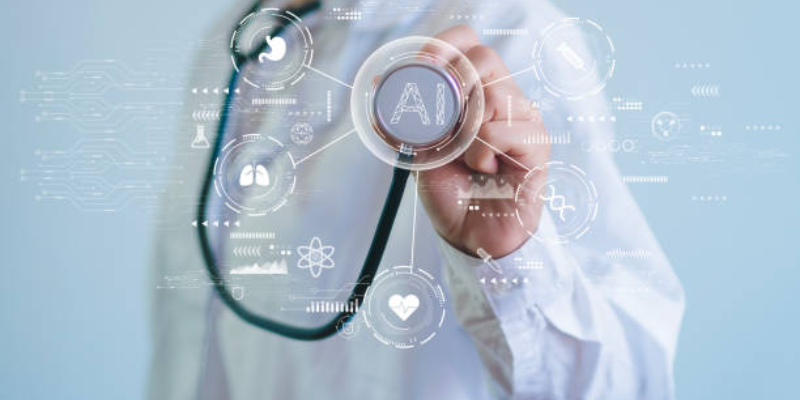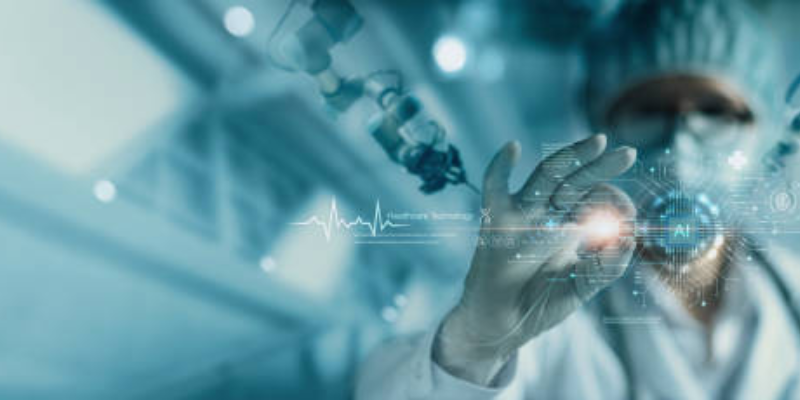Health & medical treatment
How AI is Transforming Healthcare Diagnostics
Imagine a world where a check up can predict your risk of diabetes 5 years before symptoms show up or where a radiologist can spot a tumor the size of a grain of rice – thanks to a digital assistant working behind the scenes. This isn’t science fiction; it’s healthcare diagnostics in 2025.
Imagine a world where a check up can predict your risk of diabetes 5 years before symptoms show up or where a radiologist can spot a tumor the size of a grain of rice – thanks to a digital assistant working behind the scenes. This isn’t science fiction; it’s healthcare diagnostics in 2025. Artificial intelligence (AI) is changing how we detect, diagnose and manage disease, with unprecedented accuracy, speed and personalization. From speeding up cancer diagnosis to reducing clinician burnout, AI is quietly revolutionizing medicine. Let’s take a look.
From Fuzzy Images to Clear: AI in Medical Imaging
Medical imaging has been the cornerstone of diagnostics for ages, but even the best radiologists can miss subtle patterns in X-rays, MRIs or CT scans. Enter AI, which acts like a supercharged second pair of eyes.
Seeing the Invisible
AI algorithms trained on millions of images can now rival – and sometimes outperform – human experts in detecting anomalies. For example, convolutional neural networks (a type of deep learning) can highlight early stage tumors in mammograms or detect signs of Alzheimer’s in brain scans that might elude human eyes . Startups like Sierra Medical are using AI to identify pre-cancerous cells in biopsies, reducing diagnosis time and cost .

Speed vs Accuracy
In emergency situations like stroke care, every minute counts. AI tools like Hevi AI’s hStroke analyze brain scans in seconds, alerting doctors to blockages or bleeds faster than traditional methods . This could be the difference between recovery and lifelong disability.
The Human-AI Partnership
AI isn’t replacing radiologists – it’s empowering them. By automating routine tasks, AI frees up specialists to focus on complex cases and patient care. As Joe DeVivo, CEO of Butterfly Network, said: “AI amplifies human capabilities, democratizes access to advanced diagnostics” .
Predicting the Unpredictable: AI in Early Detection
What if your smartwatch could warn you of a heart attack before it happens? AI is making such scenarios a reality through predictive analytics.
From Reactive to Proactive Care
By analyzing data from electronic health records (EHRs), wearables and genetic tests, AI can spot patterns that predict future risk. For example, machine learning models can predict sepsis – a deadly condition – hours before symptoms show up, giving clinicians a window to intervene . Similarly, AI can analyze blood sugar trends and lifestyle data to forecast diabetes onset, so you can take preventive measures.
Outbreak Forecasting and Public Health
During the COVID-19 pandemic, AI proved itself in modeling disease spread and resource allocation. Today, public health agencies use the same tools to predict flu surges or track emerging pathogens, so they can respond in time .
Personalized Medicine: Where Treatments are as Unique as You
One size fits all medicine is over. AI is bringing in an era where treatments are as unique as your DNA.
Your Genome, Decoded
Generative AI combines genetic data with lifestyle and environmental factors to create personalized treatments. For cancer patients that means treatments tailored to their tumor’s molecular profile, maximum efficacy and minimum side effects.
Dynamic Treatment Plans
AI doesn’t stop at diagnosis—it monitors patients in real time. Wearables integrated with AI like Kelvin Health’s thermal imaging platform track chronic conditions (e.g., diabetes) and alert providers to anomalies . This feedback loop allows for adjustments on the fly so treatments stay effective.

Lightening the Load: AI as a Clinician’s Right Hand
Clinician burnout is a global crisis with over 50% of healthcare workers reporting exhaustion . AI is stepping in to help.
Cutting the Paperwork
Doctors spend up to 2 hours a day on EHR documentation—time that could be spent with patients. Ambient AI scribes like those used by The Permanente Medical Group listen to patient-doctor conversations and auto-generate clinical notes saving an hour a day per clinician .
Smarter Workflows
AI streamlines everything from appointment scheduling to insurance claims. Tools like MediCodio’s AI-powered medical coding software automate billing reducing errors and administrative headaches.
Decision Support, Not Replacement
AI-powered Clinical Decision Support Systems (CDSS) act as trusted advisors offering evidence-based recommendations. For example Synaptiq’s Mediq software helps radiation oncologists pinpoint tumors with precision, saving time and improving outcomes . As Greg Samios of Wolters Kluwer says clinicians trust AI most when it’s grounded in expert-vetted data.
The Flip Side: Navigating Ethical and Practical Challenges
While AI’s potential is huge its adoption isn’t without challenges.
Data Privacy and Security
Healthcare data breaches are on the rise and AI systems hungry for vast datasets must balance innovation with privacy. Robust encryption and compliance with regulations like HIPAA and GDPR are non-negotiable.
Bias in the Machine
AI algorithms can perpetuate biases present in their training data. For example a model trained on predominantly Caucasian populations will misdiagnose conditions in other ethnic groups. Fixing this requires diverse datasets and ongoing audits.
The “Black Box” Problem
Many AI systems are inscrutable “black boxes” leaving clinicians wondering how they arrived at a conclusion. Explainable AI (XAI) aims to demystify this process and build trust through transparency.
Regulatory Fine Lines
Regulators are struggling to keep up with AI’s fast pace. The FDA’s guidelines for AI-based medical devices are a start but global standards are still evolving.
What’s Next? The Future of AI in Diagnostics
The AI healthcare revolution has just begun. Here’s what’s coming:
AI Agents and Ambient Intelligence
Imagine AI “agents” that handle everything from diagnosis to follow-up care. These systems will work behind the scenes integrating with wearables and EHRs to provide seamless proactive care.

Closing the Rural Care Gap
AI powered telehealth like Smilo’s teledentistry platform is bringing specialist care to rural areas. In 2025 AI driven tools will democratize access even further, from mobile ultrasound devices to AI stethoscopes .
The Rise of the Chief AI Officer
As AI moves into healthcare, organizations are creating new leadership roles—like Chief AI Officers—to lead strategy and ethics .
Getting Ready for the AI Future
AI in healthcare diagnostics isn’t about algorithms replacing human touch—it’s about us getting better at saving lives and improving outcomes. From catching diseases earlier to personalizing treatments the benefits are huge. But it will only work if we all work together: technologists, clinicians and policymakers to make AI ethical, fair and patient centric.
As we go through this change one thing is for sure: healthcare isn’t just going digital—it’s going intelligent. And that’s something to be excited about.
How do you like this article?





 Latest Posts
Latest Posts





